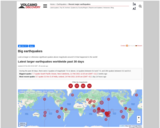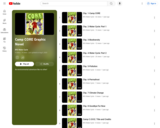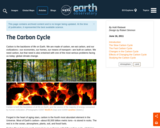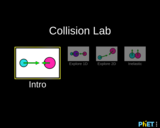
More information on analog and digital technologies.
- Subject:
- Science
- Material Type:
- Student Guide
- Provider Set:
- Utah SEEd Textbook Resources
- Author:
- ExplainThatStuff!
- Date Added:
- 02/25/2021

More information on analog and digital technologies.

Two opposing perspectives about analog versus digital from recording engineers.

This Adobe Spark Page displays animal characteristics that are essential for survival in a desert habitat.

The axolotl is a Mexican salamander with an incredible ability: Cut its leg off, and the limb will grow right back! How it does this and why humans can't is still a bit of a mystery. Researchers like Susan Bryant of UC Irvine are studying these amphibians to understand the underlying mechanisms for their miraculous regenerative powers.

Students will recognize that air is a natural resource. Students will create a solution to minimize their effect on the air through conservation of energy.

Investigate how light is transmitted through prisms.

Look at larger or otherwise significant quakes above magnitude around 5.5 that happened in the world!

In this video Paul Andersen will first define momentum as the product of an objects mass and velocity. He will then demonstrate how a net force acting on an object will change the momentum in the direction of the force. Several problems will be included.

Students will investigate the construction of batteries based on how different materials react with one another to produce electricity.

Students will investigate the construction, design, and use of batteries to solve energy storage problems.

This resource is a YouTube playlist with videos to accompany the Camp C.O.R.E. graphic novel from the Modern Water Cycle collection by BYU and the USGS. The novel takes students through a scientific adventure in ecosystem science and includes chapters about the water cycle, biodiversity, pollution, permafrost, and climate change. Humans are a critical part of the global ecosystem and impact many aspects of it through our lifestyles. Each chapter covers an area where recent research has highlighted our influence and potential consequences of the status quo. We wrote this novel as a fun way to introduce this information to a younger audience in a more friendly format. The videos are another way to access the content of the novel. To download a copy of the novel itself, search "Camp C.O.R.E. graphic novel" in eMedia or visit the BYU Modern Water Cycle website.

tudents will learn how sedimentary layers are formed and how scientists use core samples to determine whether or not the area is good for their particular needs.

Information on the carbon cycle.

Students will look at the balance of carbon among the systems and construct an explanation of how the movement of carbon can result in changes to the system.

Two clear liquids are mixed together and the audience is told to watch closely... "Don't take your eyes off the liquid or you'll miss it!" Then, in a flash, the water changes to ink (or so they think!). Clock reactions like this never fail to capture the students attention, and the Iodine Clock Reaction is one of the most startling chemical demonstrations you'll ever see. How did that happen? is almost always the reaction, and when students ask How?, theyre ready to learn.

Learn the basics of gas with this informative video. Gases are compressible, they diffuse and expand to occupy the volume of their container fully.

Students will be able to explain the concept of combustion-burning of materials.

Students will compare geological maps of Utah to coal maps of Utah to determine why coal is unevenly distributed across the state.

Use an air hockey table to investigate simple collisions in 1D and more complex collisions in 2D. Experiment with the number of discs, masses, and initial conditions. Vary the elasticity and see how the total momentum and kinetic energy changes during collisions.